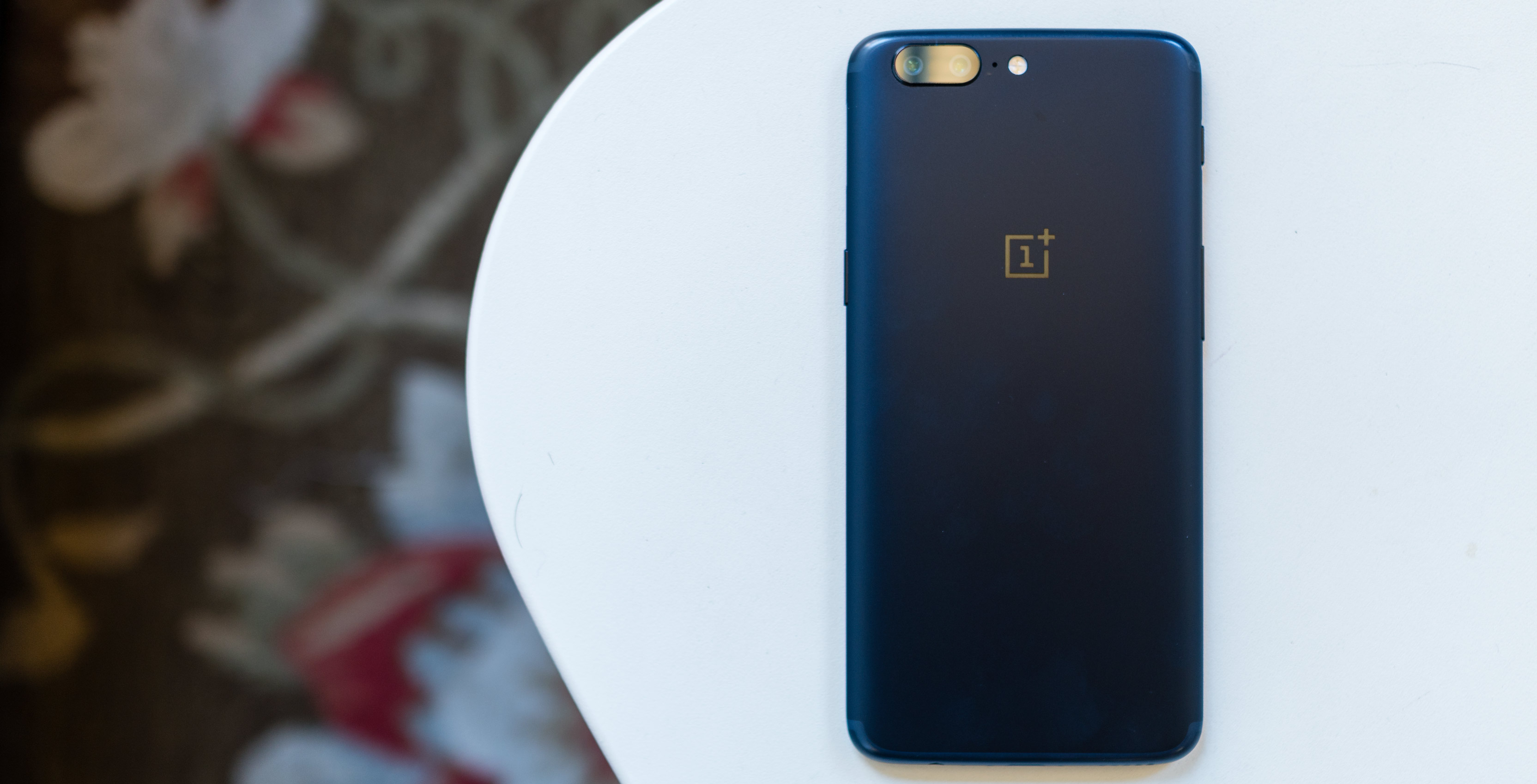
The Pros
- Superlative performance
- Excellent battery life backed up by one of the best fast charging solutions on the market
- A near stock take on Android that features smart added features
The Cons
- Main camera doesn't deliver on low-light performance
- Uninspired design
- Does not include water protection, a microSD slot or wireless charging
Last year, OnePlus delivered one of 2016’s best Android phones. It was an impressive feat for a company that was just under three years old at the time.
Less than a year later, OnePlus is back with its latest device, the OnePlus 5, and the stakes have never been higher.
OnePlus 3T
OnePlus 5
Display
5.5 inches 1080 x 1920p Optic AMOLED capacitive touchscreen,
5.5-inch AMOLED, 1080 x 1920 pixels
Processor
Quad-core (2x2.35 GHz Kryo & 2x1.6 GHz Kryo) Qualcomm Snapdragon 821
Octa-core Qualcomm Snapdragon 835
RAM
6GB RAM
6GB, 8GB
Storage
64/128GB storage
64GB, 128GB
Dimensions (in.)
152.7 x 74.7 x 7.4 mm
154.2 x 74.1 x 7.25mm
Weight
158g
153g
Rear Facing Camera
16-megapixel, f/2.0, phase detection autofocus, OIS, LED flash
16-megapixel (f/1.7) + 20-megapixel (f/2.6, 1.6x optical zoom)
Front Facing Camera
16-megapixel, f/2.0, 1.0 µm pixel size, 1080p
16-megapixel (f/2.0)
OS
Android 6.0.1 (Marshmallow)
Android 7.1.1 Nougat
Battery
Non-removable Li-Ion 3,400mAh battery
3,300mAh
Network Connectivity
GSM/ HSPA/ EVDO/ LTE
GSM / HSPA / LTE/ Band 66
Sensors
Fingerprint (front-mounted), accelerometer, gyro, proximity, compass
Fingerprint, hall, accelerometer, gyroscope, proximity, ambient light, electronic compass, sensor hub
SIM Type
Nano SIM
Nano SIM
Launch Date
November 15, 2016
June 20, 2017
Misc
Wi-Fi 802.11 a/b/g/n/ac, Wi-Fi Direct, DLNA, hotspot, Bluetooth 4.2
Colours: Midnight Black (8GB/128GB), Slate Gray (6GB/64GB) and Soft Gold (6GB/64GB) | Supports 3xCA. NFC. Bluetooth 5.0.
Display
OnePlus 3T
5.5 inches 1080 x 1920p Optic AMOLED capacitive touchscreen,
OnePlus 5
5.5-inch AMOLED, 1080 x 1920 pixels
Processor
OnePlus 3T
Quad-core (2x2.35 GHz Kryo & 2x1.6 GHz Kryo) Qualcomm Snapdragon 821
OnePlus 5
Octa-core Qualcomm Snapdragon 835
RAM
OnePlus 3T
6GB RAM
OnePlus 5
6GB, 8GB
Storage
OnePlus 3T
64/128GB storage
OnePlus 5
64GB, 128GB
Dimensions (in.)
OnePlus 3T
152.7 x 74.7 x 7.4 mm
OnePlus 5
154.2 x 74.1 x 7.25mm
Weight
OnePlus 3T
158g
OnePlus 5
153g
Rear Facing Camera
OnePlus 3T
16-megapixel, f/2.0, phase detection autofocus, OIS, LED flash
OnePlus 5
16-megapixel (f/1.7) + 20-megapixel (f/2.6, 1.6x optical zoom)
Front Facing Camera
OnePlus 3T
16-megapixel, f/2.0, 1.0 µm pixel size, 1080p
OnePlus 5
16-megapixel (f/2.0)
OS
OnePlus 3T
Android 6.0.1 (Marshmallow)
OnePlus 5
Android 7.1.1 Nougat
Battery
OnePlus 3T
Non-removable Li-Ion 3,400mAh battery
OnePlus 5
3,300mAh
Network Connectivity
OnePlus 3T
GSM/ HSPA/ EVDO/ LTE
OnePlus 5
GSM / HSPA / LTE/ Band 66
Sensors
OnePlus 3T
Fingerprint (front-mounted), accelerometer, gyro, proximity, compass
OnePlus 5
Fingerprint, hall, accelerometer, gyroscope, proximity, ambient light, electronic compass, sensor hub
SIM Type
OnePlus 3T
Nano SIM
OnePlus 5
Nano SIM
Launch Date
OnePlus 3T
November 15, 2016
OnePlus 5
June 20, 2017
Misc
OnePlus 3T
Wi-Fi 802.11 a/b/g/n/ac, Wi-Fi Direct, DLNA, hotspot, Bluetooth 4.2
OnePlus 5
Colours: Midnight Black (8GB/128GB), Slate Gray (6GB/64GB) and Soft Gold (6GB/64GB) | Supports 3xCA. NFC. Bluetooth 5.0.
Not only does the OnePlus 5 follow on the heels of an illustrious predecessor, it’s also the company’s most expensive phone to date, starting at $649 CAD for the 6GB RAM, 64GB ROM slate gray model and increasing to $719 for the 8GB, 128GB ROM midnight black model.
Does the OnePlus 5 live up to and surpass the 3T? In most cases, the answer to that question is complicated. More often than not, the OP5 shows the limits of what a small company can do in an arena dominated by big players like Apple and Samsung.
Say hello to the iPhone’s long lost twin
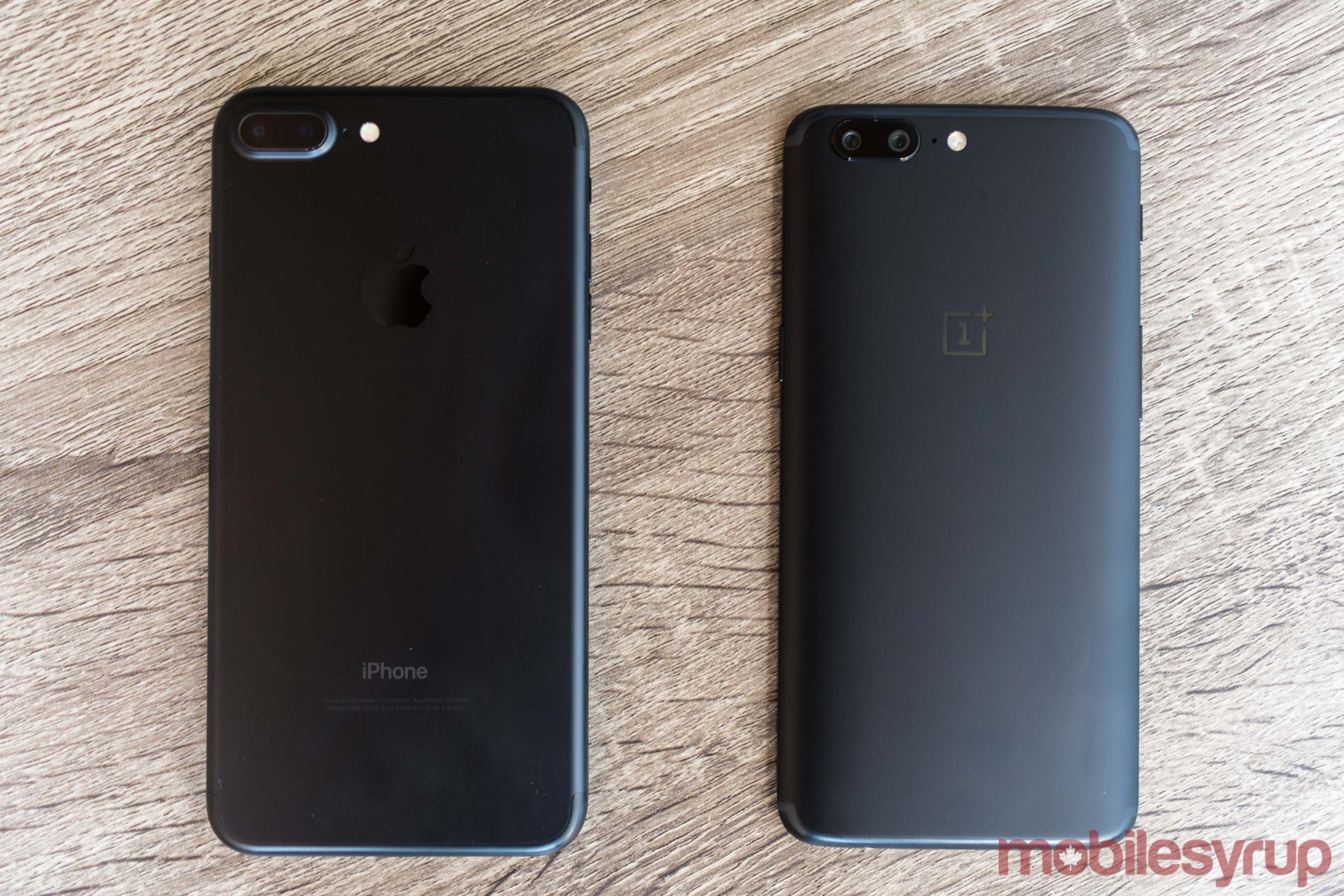
OnePlus says it went through more than 100 physical design iterations before it arrived at the final design of the OnePlus 5. That’s a lot of work to end up with a smartphone that looks almost exactly like the iPhone.
However, once you get past its uninspired design, and get a chance to touch and hold it, the OnePlus 5 reveals its strengths.
At 7.5mm thick, it’s the company’s thinnest phone next to the OnePlus X. Despite weighing only 153 grams, it also feels perfectly balanced; it’s neither too light nor too heavy.
It’s also great to hold, and the smooth matte finish keeps up appearances with a resistance to fingerprints and smudges.
Build quality is once again fantastic. Everything about the OnePlus 5 feels solid. Moreover, it appears the company has addressed some of the QA issues that affected the 3T. For instance, on my OnePlus 5 review unit, the rear-facing camera bump is properly aligned — a variety of OP3 and OP3T units, including my review unit, featured crooked camera bumps.
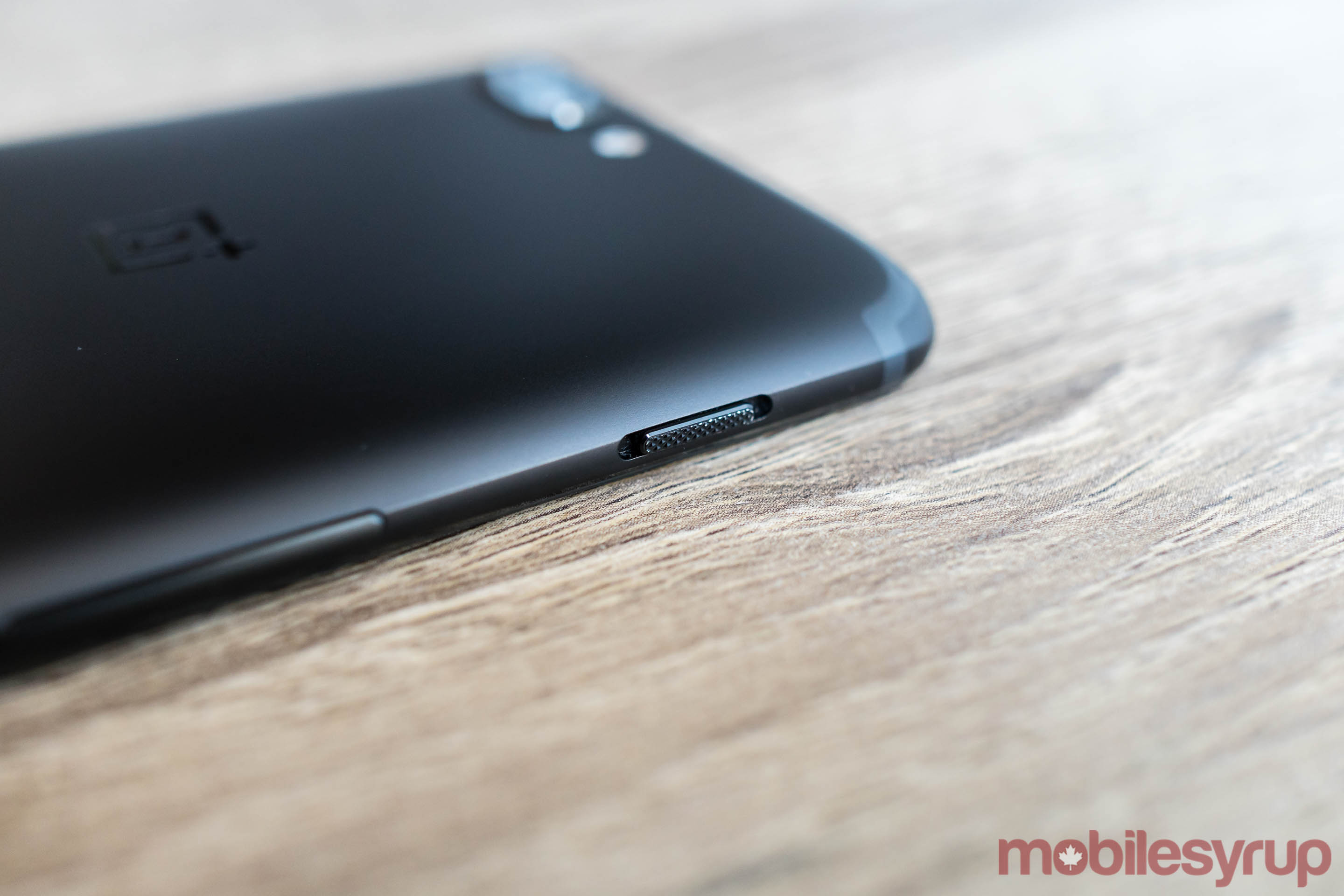
One issue is that aren’t many colours to choose from at launch. Unlike the OnePlus 3T, the OnePlus 5 is not available in the company’s attractive soft gold colour, at least not yet.
Moreover, ahead of the release of the OnePlus 5, it seemed like OnePlus planned to introduce two new red and unicorn-inspired colour options. Unfortunately, neither of those colours have materialized, leaving consumers with two options at launch: midnight black and slate gray, fancy names for what amounts to two different shades of black.
Then there’s the front of the device. Unlike the Galaxy S8 and LG G6, the OnePlus 5 does not feature a bezel-less screen. In an interview with The Verge, OnePlus CEO Pete Lau said the company considered a bezel-less display. “This is something we want to try,” he told the tech publication’s Dan Seifert. “But we don’t currently have the resources or access to those displays.”
To be fair, we probably won’t see smaller bezel-less screens filter down to devices from smaller smartphone OEMs until at least another year or two. That said, it’s most apparent that OnePlus is a small OEM when one takes a look at the screen of the OnePlus 5.
At first glance, it looks like the OP5 has the exact same 1920×1080 pixel Optic AMOLED display as its predecessor. Digging into the phone’s settings menu reveals that OnePlus has added support for the DCI-P3 colour gamut to the OP5.
Paradoxically, this feature isn’t enabled by default; instead, the phone ships tuned to the NTSC colour space. This is the same colour space that made the colours on the OnePlus 3 look over-saturated until OnePlus issued a software update that allowed to users to switch the display to sRGB.
Once you switch to either sRGB or DCI-P3 (I detail how to do that in this how-to), the OnePlus 5’s AMOLED display looks great. Colours appear much truer to life, which makes viewing images and videos more enjoyable.
That impression fades somewhat once you compare the OnePlus 5 to something like the iPhone 7 Plus, which has an IPS LCD display. Brightness, colour accuracy, clarity and viewing angles are all not as good when compared to the iPhone. To my mind, the missed opportunity of the OP5 is not that OnePlus did not include a bezel-less screen, but the fact that the company did not move away from the same PenTile AMOLED display it shipped with the OnePlus 3T.
One positive note is that the touch latency issue that was present in the OnePlus 3T, appears to have been addressed by OnePlus.
A flagship without all the modern nice-to-haves
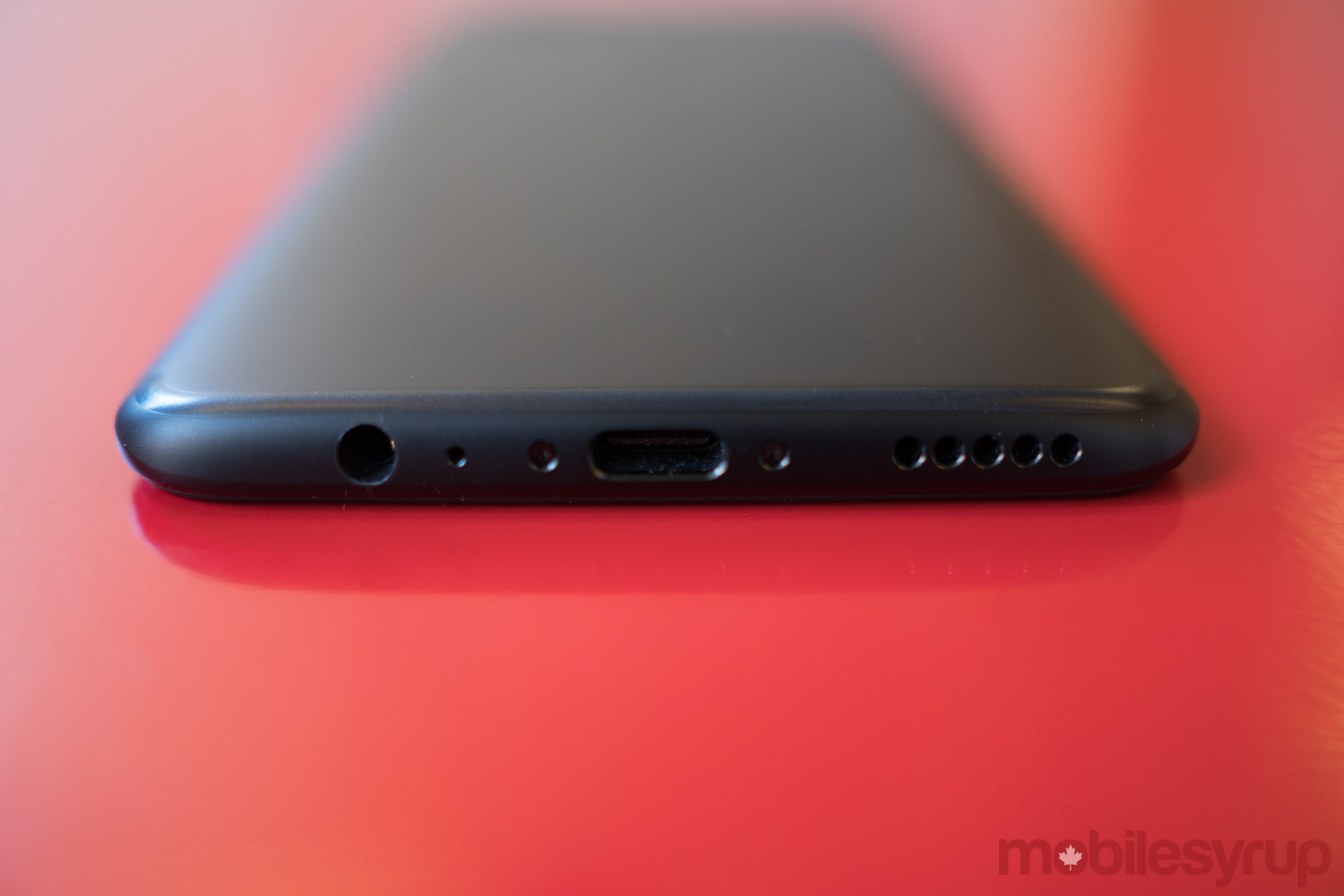
A bezel-less screen is just one of the features consumers have come to expect in a modern flagship device that’s missing from the OnePlus 5.
Unlike the LG G6 and Samsung Galaxy S8, the OnePlus is not IP68 certified. Likewise missing is support for either Qi or PMA wireless charging. Moreover, OnePlus does not currently sell any kind of case that enables the feature. Lastly, like the OnePlus 3T, the OnePlus 5 features a SIM card tray that has space for two SIM cards, not a SIM card and SD card, meaning if you decide to buy this phone, it’s impossible to expand its storage at a later date.
In other words, it’s a flagship phone without all the bells and whistles.
In my time with the OP5, I didn’t particularly feel the absence of any of those three features. However, it would be nice to get those features not only because they were missing with the 3T, but also because the OP5 is a more expensive phone than the 3T.
Stellar performance where it counts
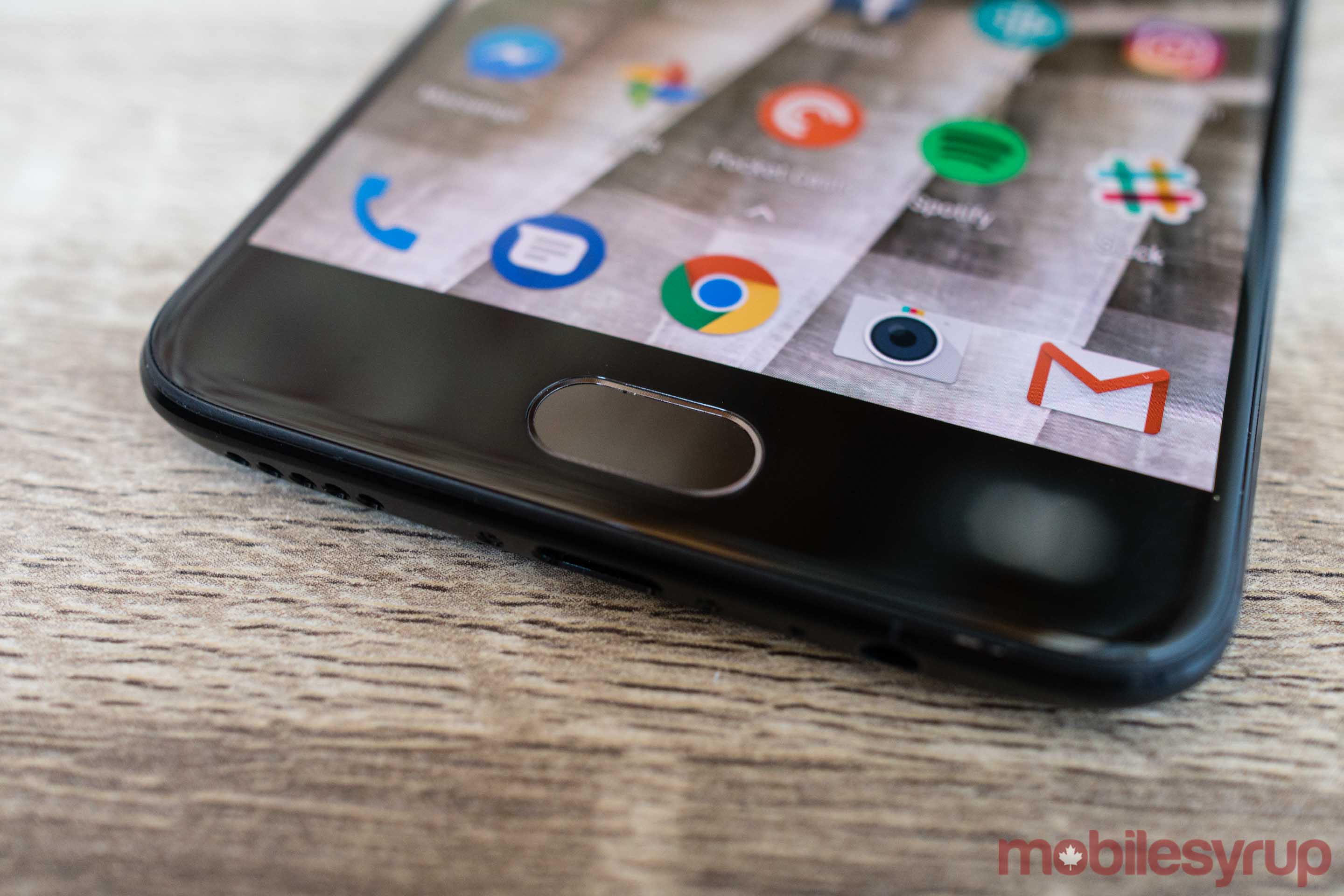
One area the OnePlus 5 does not disappoint is in the various performance aspects of its internal hardware.
Depending on the model, the OnePlus 5 features either 6GB or 8GB of RAM. While we’re starting to see more high-end Android devices ship with 6GB of RAM, a trend the OnePlus 3 helped start, the inclusion of 8GB of RAM with the midnight black model seems more a marketing bullet point than a useful feature addition.
The more significant improvement here is the fact that the OnePlus 5 features LPDDR4X RAM, which the company says is 17 percent more power efficient than the RAM it used with the OP3T. Coupled with its Snapdragon 835 processor, which OnePlus says draws 40 percent less power than the larger previous generation 14-nanometer chips, the OnePlus 5 should, according to the company, last approximately 20 percent longer than the OnePlus 3T, despite the fact that it features a smaller 3,300mAh capacity battery.
In practice, I found battery life was about the same between the two phones. The OP3T is routinely able to get through an entire day of use, with enough power left over at the end of the day to get through the night without needing a top up. In the short time that I’ve had the OnePlus 5, it has delivered similar results.
Like with the OP3T, my OnePlus 5 review unit is able to get through a full day of moderate use — listening to music, surfing the web and running a variety of apps — and have enough power left at the end of the night to get through to the morning. If I forget to charge it in the morning, it usually has enough power to get me through my morning commute.
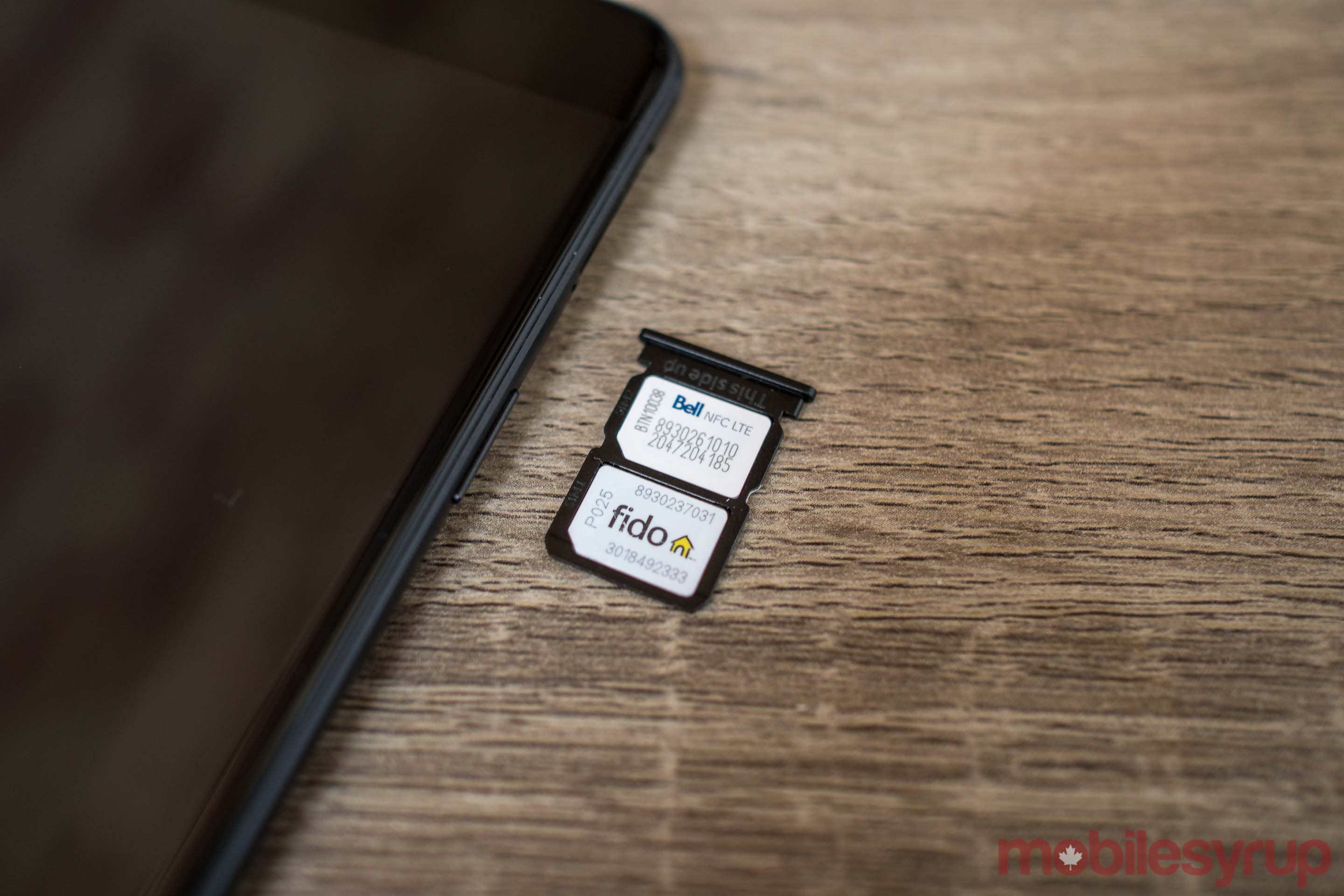
Once the battery does need to be charged, the OnePlus 5 comes with the company’s Dash Charge fast charger. As with the OnePlus 3T, Dash Charge is one of the highlights of using the OnePlus 5. The adapter is able to quickly charge the phone without making it hot, which helps extend the long-term longevity of the battery.
OnePlus claims its Dash Charge adapter can provide the OnePlus 5 with approximately a full day’s worth of battery life in about 30 minutes. Given that what amounts to a full day of battery life is dependent on how each person uses their phone, it’s a claim that’s hard to test. Overall, however, the included Dash Charge adapter was able to fully charge my device in approximately 30 to 45 minutes depending on how much remaining power it had before I set it to charge.
In terms of moment to moment performance, the OnePlus 5 is a pleasure to use. Thanks to its state of art Snapdragon 835 processor, healthy amount of RAM and fast UFS 2.1 storage, everything from launching apps, to moving between homescreens, to something as simple as pulling down Android’s notification shade is fast and fluid. In my time with the phone, I’ve not experienced any performance hangups. Without a doubt, this is one of the fastest Android handsets on the market currently.
From a Canadian perspective, the more significant improvement tied to the OnePlus 5’s inclusion of the Snapdragon 835 is the accompanying modem that’s built into the new 10-nanometer chip. The new modem supports all major Canadian carrier bands and frequencies, including both Band 4 and Band 66, meaning the OP5 is fully compatible with Freedom Mobile AWS-3 LTE network. Additionally, it supports faster download and upload speeds. OnePlus says the OP5 can reach theoretical download speeds of 600Mbps and upload speeds of 150Mbps.
In real world use, the OnePlus 5 is unlikely to achieve anything approaching 600Mbps down, but it’s still able to put up impressive numbers. With my Fido SIM, I was able to get an average 18Mbps down at MobileSyrup‘s downtown Toronto office. Meanwhile, using my colleagues’ Telus and Bell SIMs, Ookla Speedtest reported average download speeds of 68Mbps and 36 Mbps, respectively.
An impressive take on Android with one caveat
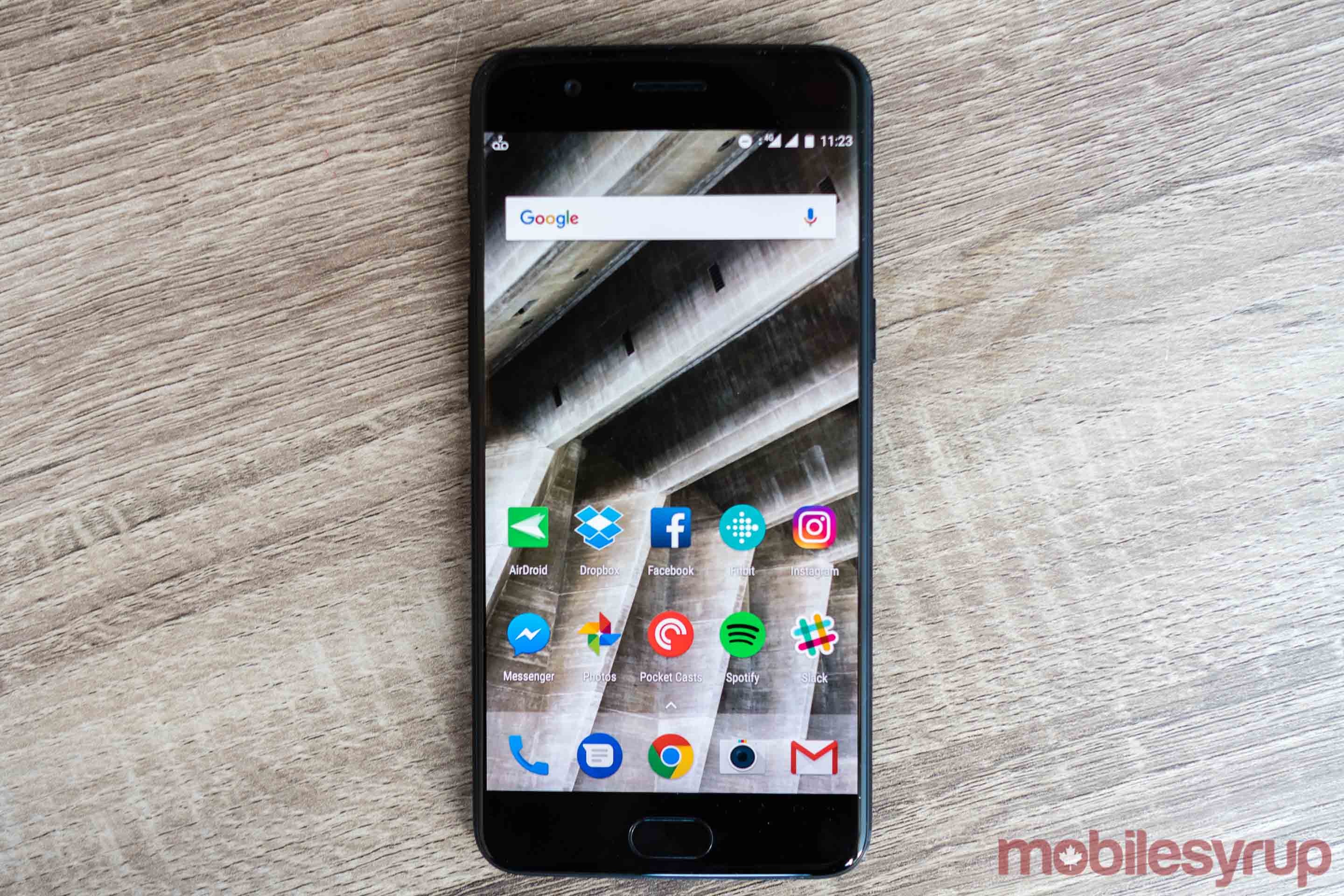
Keeping with its past phones, OnePlus has exercised a light touch when it comes to the software on its latest device.
Once again, the newest OnePlus device ships with the company’s OxygenOS skin. In the case of the OP5, it’s built on the latest official release of Android, 7.1.1. What that means for the average consumer is that they’ll be greeted with a version of Android that looks and functions a lot like what comes with Google’s phones. In fact, one of the subtle changes OnePlus made to it skin this time around was to reskin the app drawer to make it look more like the one that ships with the Pixel. There’s no longer a dedicated button that brings up the drawer, instead all you need to do is pull up on the shade to access all your apps.
Elsewhere, OnePlus has added a variety of smart new features. One of my favourites is a new reading mode that desaturates the screen, making it look like an e-ink display. Within the settings menu, it’s possible to assign apps where this feature will turn on automatically. As with many of the other features OnePlus has layered on top of stock Android, the new reading mode is elegant, useful and restrained.
Where the OnePlus 5 becomes harder to recommend from a software perspective is the company’s update track record. While OnePlus has promised to update the OP3, OP3T and OP5 to Android O, OnePlus 2 users are still waiting to get their hands on Nougat. To put that the egregiousness of that situation in perspective, by my count the OnePlus 2 is one of the only Snapdragon 810-equipped devices that hasn’t been updated to the latest version of Android. Worse yet, the company has offered little explanation for the delay.
Sometimes one camera is better than two
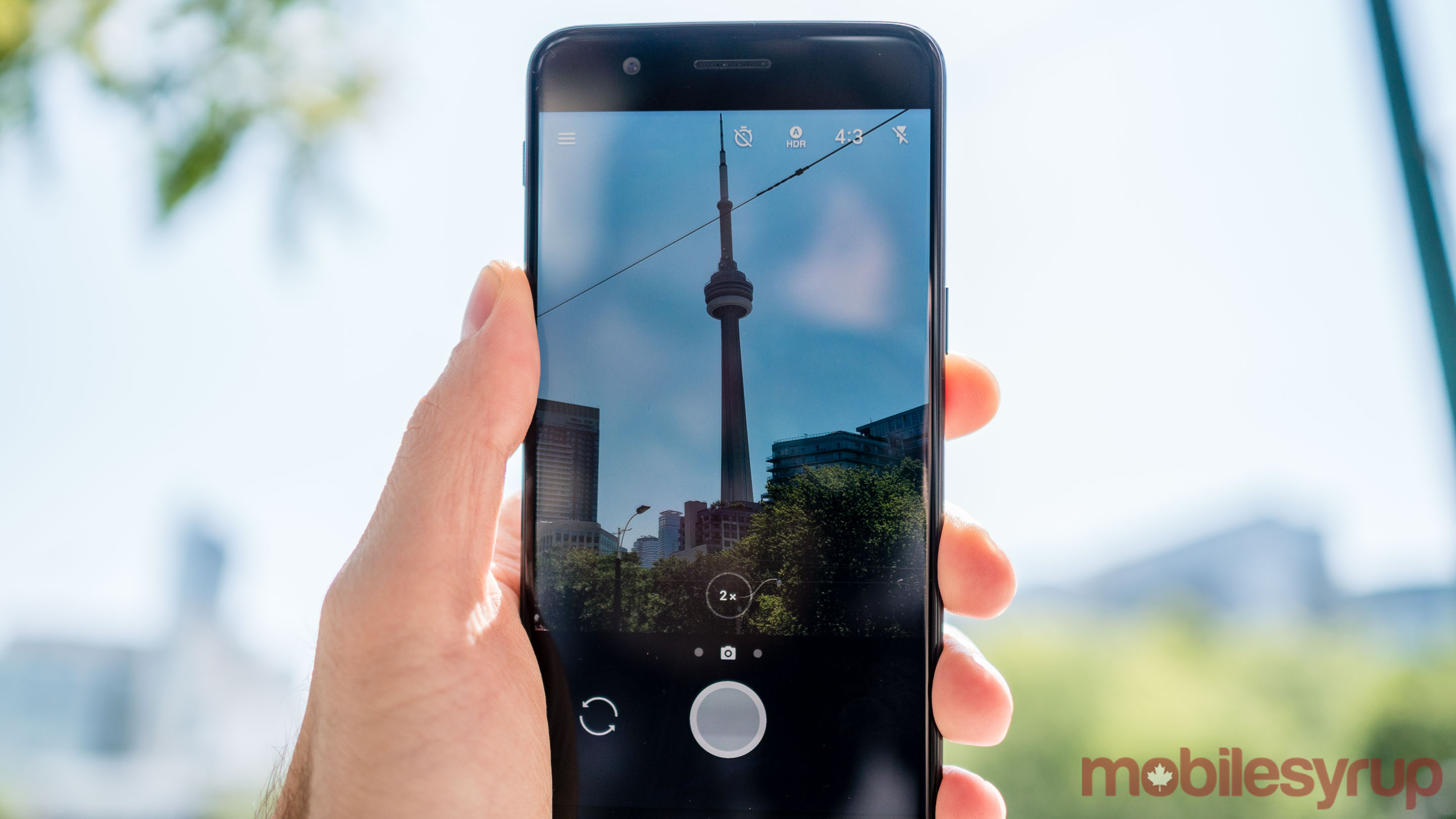
One area OnePlus promised it would improve on the 3T was in the camera department. The 3T, despite all its strengths, had a merely good camera compared to some of the excellent cameras found on other high-end devices. Going into the OP5, the company decided to use a dual camera system in an attempt to build the best possible camera.
Unfortunately, from a stills perspective, the OnePlus 5 is a mixed bag. In ideal lighting conditions, it can capture stunning images. But when the sun starts to dip below the horizon line or you find yourself in a dark room, it delivers markedly worse results.
The main issue is the sensor configuration that OnePlus went with the OP5. The phone’s main camera features one 16-megapixel sensor with f/1.7 aperture lens and another 20-megapixel sensor with f/2.6. OnePlus says the OnePlus 5 has the highest resolution dual camera system on the market. Unfortunately, that means it’s also one of the noisier cameras currently available as well.
Compared to something like the Google Pixel, which features a single 12.3-megapixel sensor that has 1.55 nanometer-sized pixels, each pixel on the OnePlus 5’s main 16-megapixel camera is 1.12-nanometers. While not a huge difference in absolute terms, it’s a major relative difference that means the OnePlus 5’s main camera is much worse at gathering light.
Moreover, neither of the two back-facing cameras include optical image stabilization (OIS). In this way, the OP5 is a step back from the 3T, which did feature a rear-facing camera with mechanical stabilization. Not that OIS is the be-all and end-all when it comes to low-light situations and video capture; it won’t help in situations in which the subject is moving quickly, for instance — but it can help in certain situations. Additionally, image stabilization almost always leads to sharper images, since the mechanism helps eliminate camera shake, and it opens a number of creative long exposure options without the use of a tripod.
Then there’s the second telephoto camera that comes with the OP5. Like with the iPhone’s telephoto lens, the 20-megapixel camera on the OnePlus only works if the phone detects there’s enough light for it to capture a decent photo. One of the results of this setup is that the OnePlus 5’s 2x zoom is a mix between optical and digital zoom.
This leads to the OnePlus 5’s main camera-related software addition. Like Apple, OnePlus has added a portrait mode to its latest phone. This mode promises to help users take portrait shots of their friends and family members that feature a DSLR-like depth of field effect. Using portrait mode is simple enough, simply swipe to the left to enable portrait mode and tap on your subject.
Unfortunately, the resulting images often aren’t that great. In most instances, the bokeh does not look pleasing. Moreover, I often found that the OnePlus 5 was too aggressive in applying its depth-of-field effect to the subject I was photographing. Likely this is something OnePlus will continue to iterate on in the future, but at launch it’s not impressive.
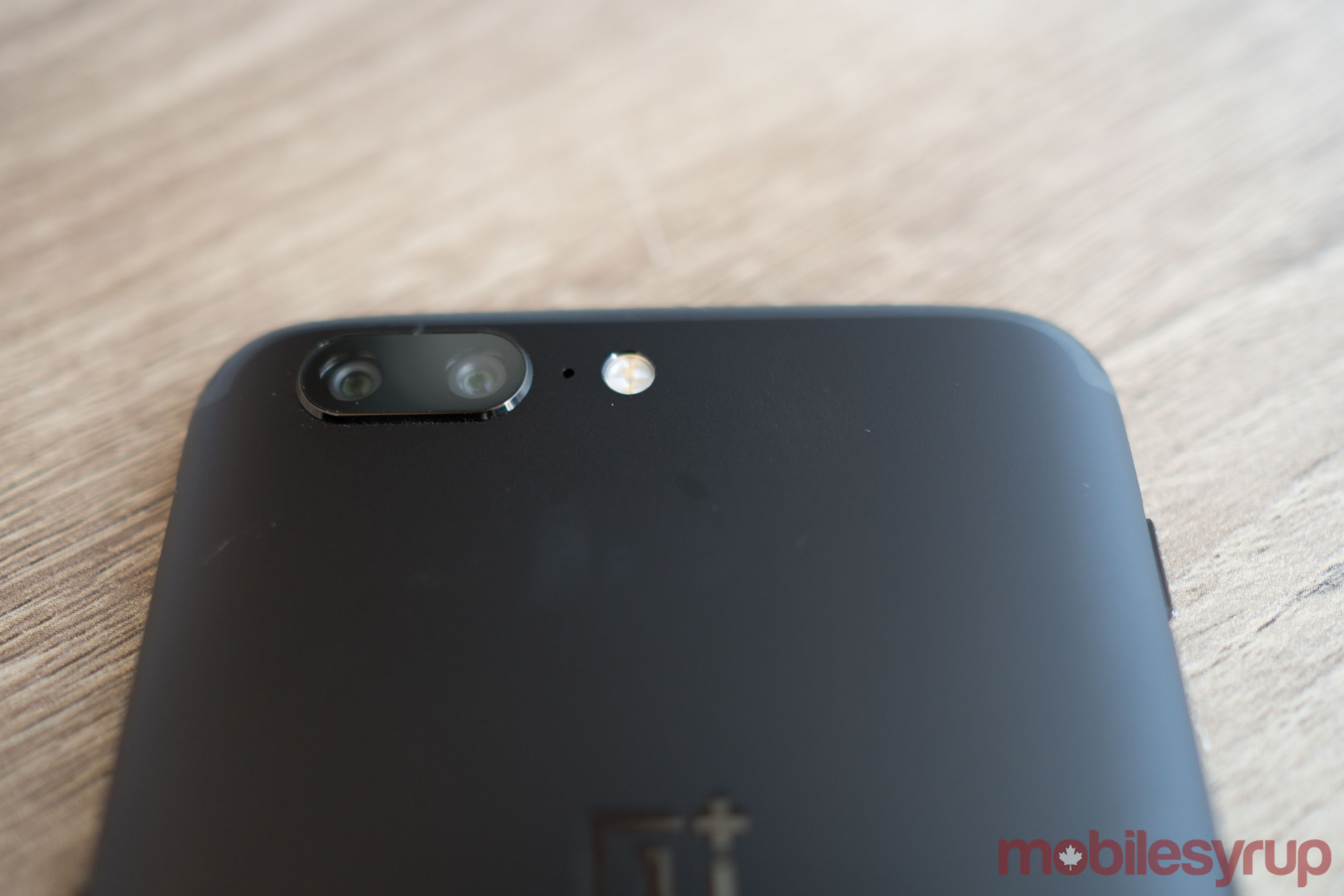
The other major software addition is a new pro mode that allows the user to adjust ISO, white balance, shutter speed, focus and exposure compensation. It also and includes a histogram and level. Additionally, pro mode allows users to separately set the point where the camera meters the scene as well as where it sets the focus point.
Lastly, it allows users to shot in RAW, which opens a whole host of image editing options. It’s one of the best pro modes I’ve seen on a smartphone, so it’s a shame the OnePlus doesn’t quite have the camera package to make the most of it. On the front the device features a 16-megapixel f/2.0 camera.
It’s more or less the same front-facing camera that shipped with the OnePlus 3T. While it uses a new sensor sourced from Sony (the 3T used one from Samsung), the lens itself is a fixed-focus one, so unless you position yourself perfectly in relation to the camera images can turn out a bit soft. Like its two friends on the back of the OnePlus 5, the front-facing camera does not feature optical image stabilization.
Make OnePlus great again
Despite its blemishes, I thoroughly enjoyed my time with the OnePlus 5, but then I've also enjoyed my time with its predecessor. What's disappointing about this device is that it doesn't significantly improve on the 3T's weaknesses.
Indeed, it possesses all of the same strengths and weaknesses of the company's previous effort. If you want a phone that's incredibly fast, responsive and features a take on Android that's as close to stock as possible, then this is the device for you. However, if you want best camera available on an Android device, then it's best to look elsewhere.Even at $649 to start, $50 more than the 3T's launch price, I think the OnePlus 5 is a good device, but if the fact that OnePlus is asking more for a device that doesn't successfully address the pitfalls of its predecessor strikes you as petty, then I wouldn't hold it against you.
At its worse, the OnePlus 5 settles for being merely good smartphone when it could have been a great one.
"It possesses all of the same strengths and weaknesses of the company's previous effort" 8/10
MobileSyrup may earn a commission from purchases made via our links, which helps fund the journalism we provide free on our website. These links do not influence our editorial content. Support us here.










